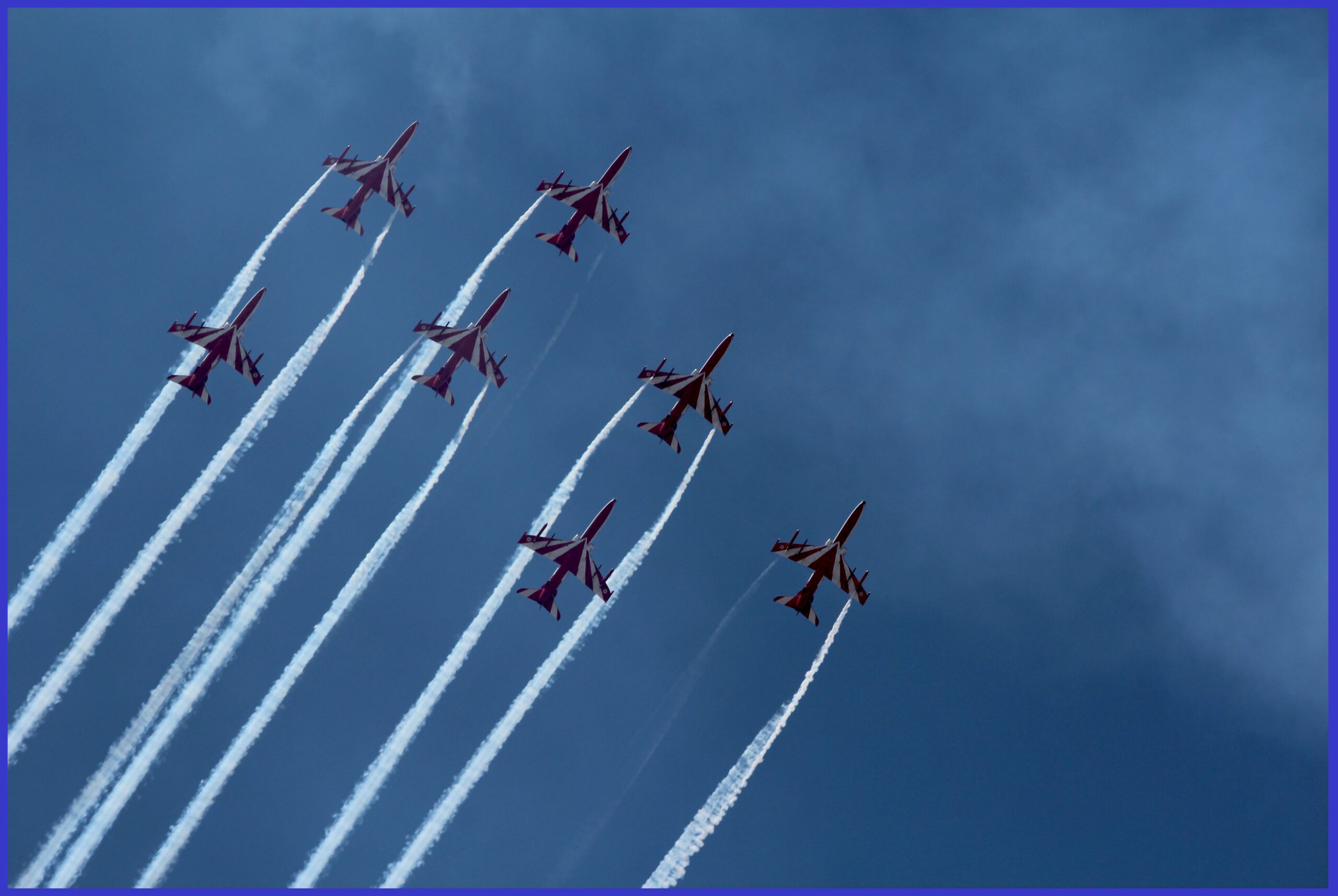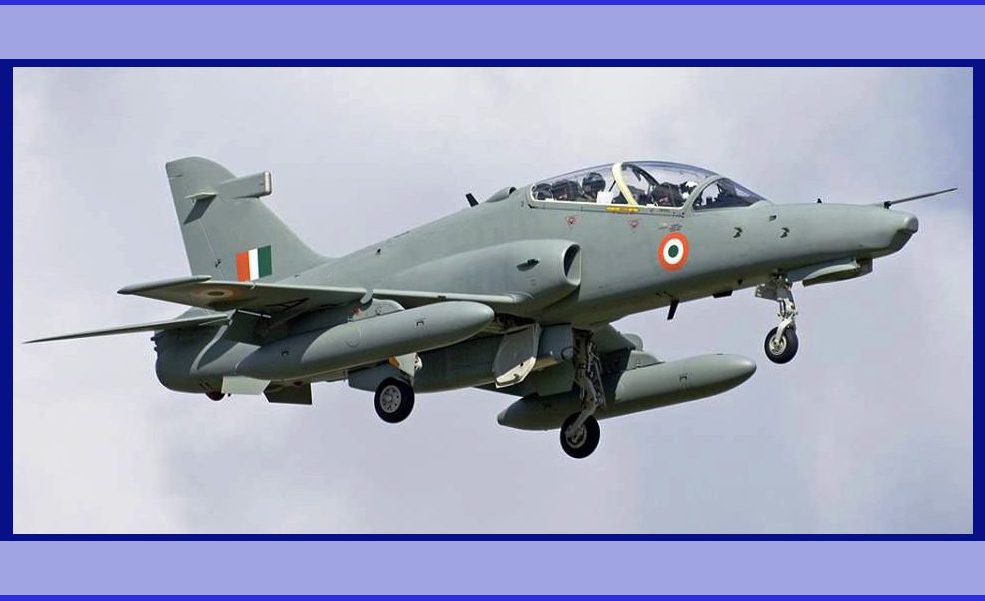Developed by BAE Systems, the “Scout the Best of the IAF Hawk Mk 132 Advanced Trainer” is an advanced jet trainer of the Indian Air Force. High-quality pilot training is only possible with such aircraft. However, it also serves as a backup combat aircraft with immense ability to defeat enemies. Overall, it is an ideal aircraft for advanced training with combat readiness.

The Hawk Mk 132 Aircraft is the world’s most capable and cost-effective Advanced Jet Trainer (AJT), providing a seamless transition between Basic Flying Training (BFT) and Operational Conversion for both current and projected front-line combat aircraft types.
The Hawk Mk 132 features a tandem cockpit arrangement designed for an instructor and a trainee pilot. Its sleek and aerodynamic structure enables exceptional manoeuvrability and speed. The aircraft’s advanced avionics and systems establish it as a prime option for pilots aspiring to refine their skills and confront the demands of modern combat, creating a realistic training environment.

With an impressive range, payload capacity, and state-of-the-art technology, the Hawk Mk 132 stands as a testament to aviation innovation and excellence. Whether operating individually or as part of a larger squadron, this aircraft is a reliable workhorse, consistently delivering results even in the most challenging conditions.
Powered by a Rolls-Royce Adour Mk 871 turbofan engine, the Hawk Mk 132 is capable of reaching speeds exceeding 1,000 km/h and altitudes of more than 13,000 meters. It incorporates a robust airframe, allowing for high agility and manoeuvrability.
The Hawk Mk 132 plays a crucial role in preparing IAF pilots for a range of missions, including air combat and ground attack, contributing to the overall operational readiness of the Indian Air Force. The Hawk was produced in the UK until 2020 and also produced under license in India by Hindustan Aeronautics Limited (HAL), with over 1,000 Hawks sold to 18 countries around the world.

The Background of the BAE Systems Hawk
The initial concept, known as the HS.1182, aimed to meet the training needs of various air forces, seeking to develop a cost-effective and versatile jet trainer aircraft. Hawker Siddeley (later British Aerospace, then BAE Systems) designed the HS.1182 Hawk to replace the Folland Gnat T.Mk1, the standard RAF jet trainer in the 1960s. The Hawk has a tandem two-seat cockpit, low wing, and a single Adour turbofan.
It is larger than the Gnat, offering the RAF greater flexibility and weapons-carrying potential. The initial Hawk T.Mk 1 was first flown on 21 August 1974, and RAF deliveries started in mid-1976. Hawks have been acquired by 18 overseas countries, including Abu Dhabi, Australia, Canada, Finland, Indonesia, South Korea, Saudi Arabia, Switzerland, and India.

In the US, the Hawk was adopted by the US Navy as its standard advanced trainer, known as the much-modified T-45A Goshawk. Some 221 examples were delivered in production by McDonnell Douglas, commencing in 1988 and continuing with Boeing as the T-45C. The Hawk 200 was designed as a single-seat combat version and has been sold to Indonesia, Malaysia, Saudi Arabia, and Oman. The prototype first flew on 19 May 1986.
On March 26, 2004, the Indian Air Force formally entered into a contract for the acquisition of Hawk aircraft. The Hawk Mk. 132 was officially incorporated into the IAF’s operational fleet on February 23, 2008. Directly sourced from BAE Systems, 24 aircraft were delivered to the Air Force, with an additional 42 Hawks assembled by Hindustan Aeronautics Ltd. between 2008 and 2011.

In a development in February 2008, India articulated its intention to acquire 57 more Hawks, with 40 allocated for the Indian Air Force and the remaining 17 for the Indian Navy. As of 2015, the Indian Air Force had a standing order for a total of 123 aircraft, and negotiations were underway for an extra 20 aircraft, according to sources.
Over the years, the Hawk underwent several upgrades, leading to the development of more advanced variants. This model, specifically tailored for the Indian Air Force, features modern avionics, improved systems, and capabilities suitable for advanced pilot training. The BAE Systems Hawk remains a cornerstone in military pilot training programs globally, showcasing its enduring legacy and evolution as a highly successful and adaptable aircraft.
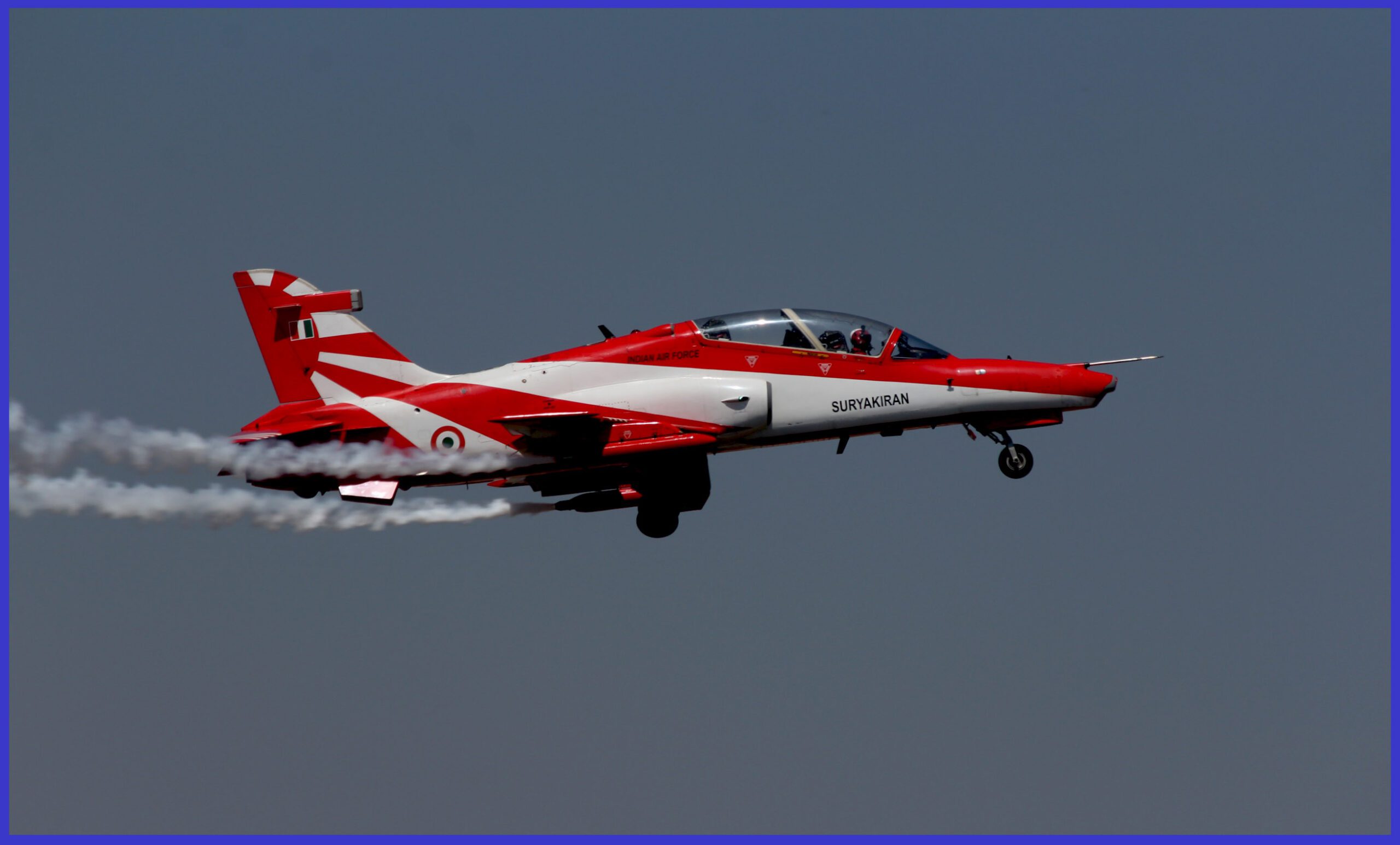
“Surya Kiran” Formation Aerobatic Team: IAF’s Precision Flying Display Unit
The Surya Kiran aerobatic team currently incorporates the BAE Systems Hawk aircraft, specifically the Hawk Mk 132, as part of its fleet. This aerobatics demonstration team belongs to the Indian Air Force and was established in 1996. The team has gained acclaim for its remarkable aerial displays, effectively highlighting both the capabilities of the Hawk aircraft and the exceptional skill and precision demonstrated by the pilots operating them.
The Surya Kiran team comprises nine aircraft that execute a variety of breathtaking manoeuvres, including loops, rolls, and formation flying. These displays demand a high degree of teamwork and coordination among the pilots, necessitating the ability to fly in close proximity without collisions. Additionally, the team is recognized for its distinctive paint scheme, characterized by a striking combination of red and white.

Since its inception, the Surya Kiran team has conducted over 500 displays in 72 cities across the country, spanning from Srinagar in the north to Thiruvananthapuram in the south and from Naliya, the westernmost air station, to Chabua, the easternmost airfield in the country. Notably, Srinagar, situated at an altitude of 5,400 feet, holds the distinction of being the highest airfield from which the team has operated, marked by a memorable performance over Dal Lake in 1998. When participating internationally, flying over the sea presents a unique challenge due to the vast, flat expanse of water impacting depth perception.

Nevertheless, the team has showcased its skills in the capitals of Sri Lanka, Myanmar, Thailand, Singapore, and Dubai as of the year 2023. Upon reaching the milestone of a decade of precision formation aerobatics, the Surya Kiran team, recognized as the youngest nine-aircraft aerobatic team globally, was granted Squadron status. As of May 1, 2006, the team officially assumed the designation of IAF’s No. 52 Squadron.
Overall, the Surya Kiran team and its Hawk Mk 132 aircraft are sources of pride for the Indian Air Force and testimonials to the skill and professionalism of its pilots. Their aerobatic displays are stunning showcases of the capabilities of the Hawk aircraft and tributes to the spirit of aviation excellence.

Alongside this article, seize the exclusive opportunity to acquire an exquisite and awe-inspiring scale model of the BAE Systems Hawk trainer equipped with landing gears, available exclusively on AirModels. This remarkable and iconic military trainer boasts an impeccable track record and is now available for purchase with worldwide delivery. Click here now to secure your piece before the limited stock is depleted.
For Advanced Training: Fighter Aircraft Training School at Bidar Air Force Station, IAF.
The Hawk 132 represents a significant step up in capability as a training aircraft, bridging the gap between the basic piston-engined trainer and the high-performance flying of an advanced fighter aircraft. It is aerodynamically much more forgiving and serves as an introduction for trainee pilots to familiarize themselves with before transitioning to advanced fighters.
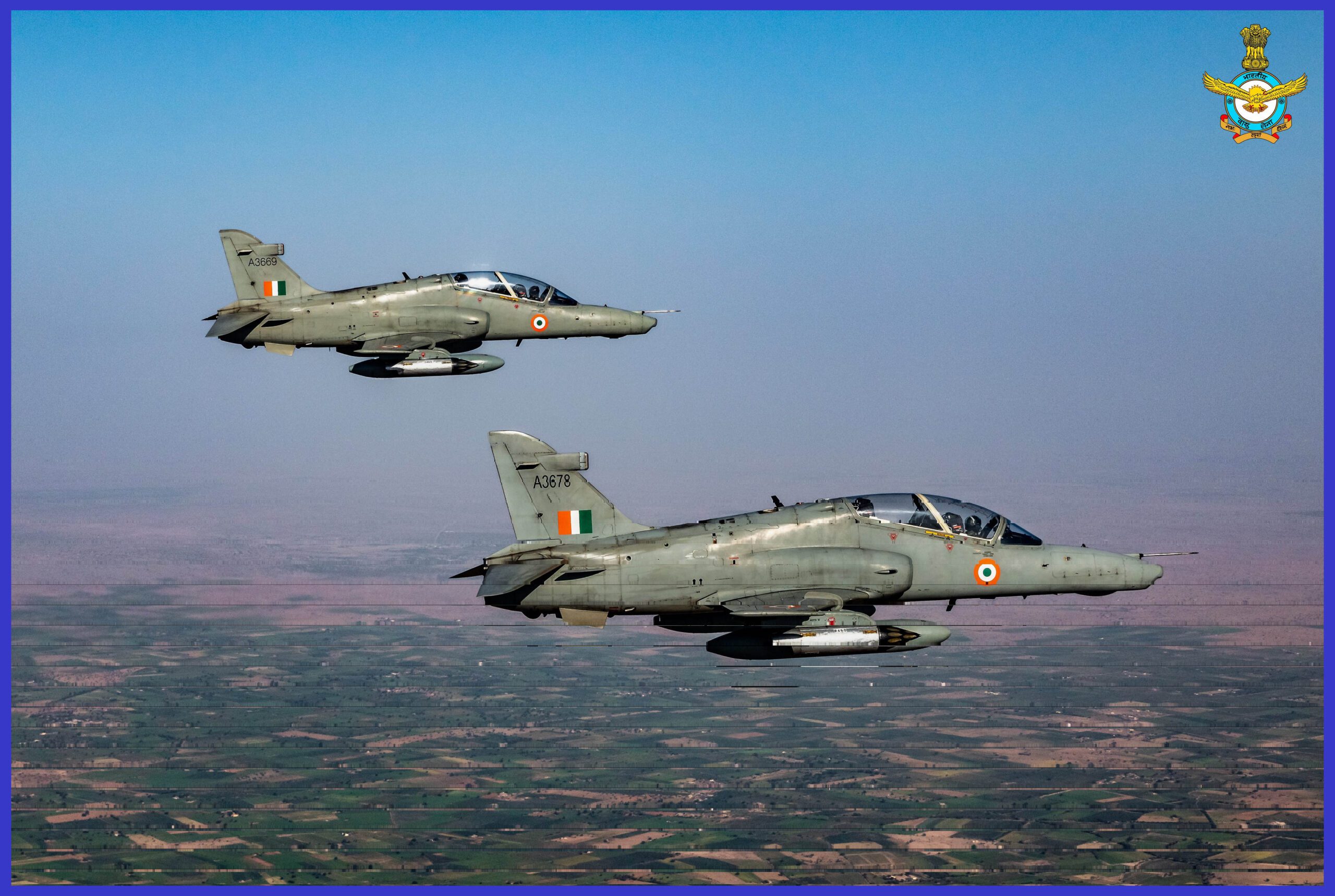
The second-largest training facility in India is situated at Bidar Air Force Station, serving as an additional training ground for graduates from the Indian Air Force Academy before their deployment to combat units. Bidar, located in Karnataka, India, benefits from its position on the Deccan Plateau, providing protection from coastal tropical weather and ensuring favourable flying conditions throughout the year. This unique geography allows even non-instrument-rated trainees to engage in flying for most of the year. Operating between 60 to 90 sorties daily, the base holds the record for generating the highest single-engine flying hours in India.

The Indian Air Force’s No. 52 Squadron operates from this base, which currently accommodates three Hawk Operational Training Squadrons (HOTS-A Aggressors, HOTS-B Bravehearts, and HOTS-C Cheetahs). Additionally, the Weapon System Operators’ School is based at this location. Pilot training consists of a 52-week program conducted in four stages, culminating in graduation from the Pilots Course and Weapons Systems Operators Course (WSOC) specifically tailored for the Hawk Mk 132 fighter aircraft.
Bidar serves as the crucial stage for pilots to undergo rigorous Stage-III training before advancing to operate supersonic aircraft, including but not limited to the MiG-21, SEPECAT Jaguar, Mirage 2000, Rafale, and Sukhoi SU-30MKI. This training is a pivotal step in preparing pilots for the complexities and demands associated with high-performance supersonic platforms.
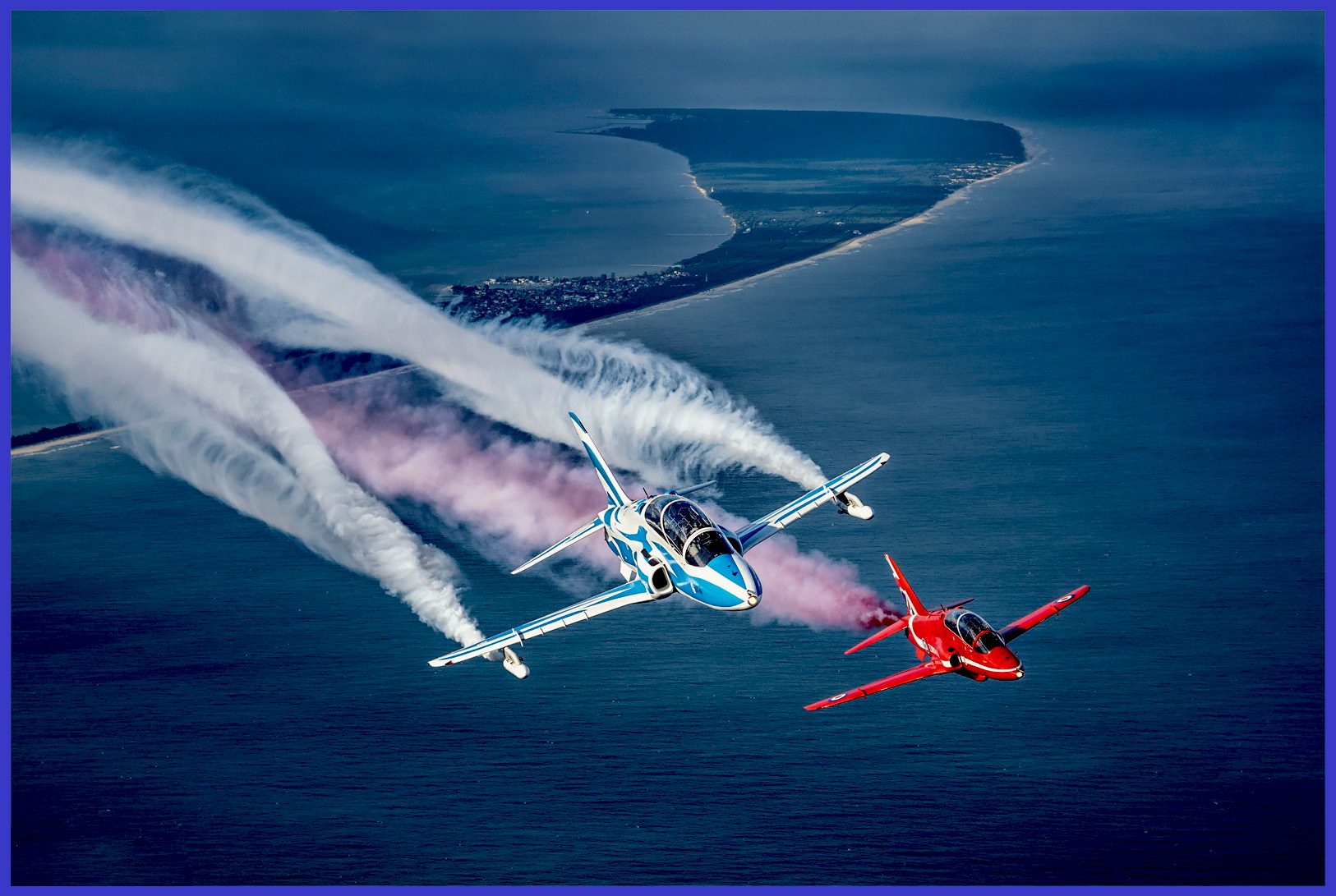
The principal Features of the Hawk Mk 132 are as follows
- Three, full-colour, Active Matrix Liquid Crystal Displays ( AMLCD )
- Cockpit Lighting is fully compatible with the use of Night Vision Goggles ( NVG )
- Head-Up Display ( HUD )
- Hands-On-Throttle-And-Stick ( HOTAS ) controls
- New Open Architecture Mission Computers ( OAMC )
- Enhanced Stores Management System ( SMS )
- Inertial Navigation / Global Positioning Systems ( IN/GPS )
- Health and Usage Monitoring Systems ( HUMS )
- An Upgraded Electronic System
- An Auxiliary Power Unit ( APU )
- An On-Board Oxygen Generation System ( OBOGS )
- Air-to-air refuelling ( AAR ) capability
- Synthetic Sensor and Weapons Capability
- Digital Moving Map ( DMM )
- Ground Proximity Warning System ( GPWS )
- Traffic Alert and Collision Avoidance System ( TCAS )
- Autopilot
- Electronic Checklist
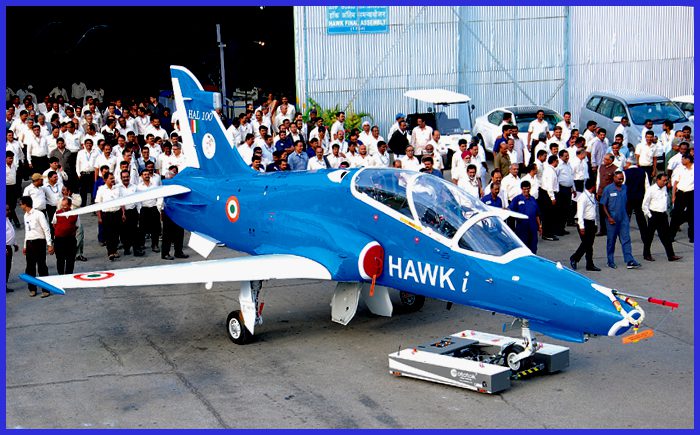
Hawk-i: Advancements in the Indian Hawk Aircraft
The Advanced “Hawk I” is a collaborative effort between BAE Systems and Hindustan Aeronautics Limited (HAL) aimed at upgrading the Hawk 132 into an Advanced Subsonic Fighter-trainer, suitable for deployment in main battlefields. The aircraft was officially unveiled at Aero India 2017 on 14 February 2017, with its maiden flight taking place in June 2017. It is designed to handle emergencies, featuring integrations such as ASRAAM on its wingtips, two pylons on each side of the wings, and a centerline pylon. Additionally, it can equip Israeli targeting pods and precision weapons developed by DRDO.
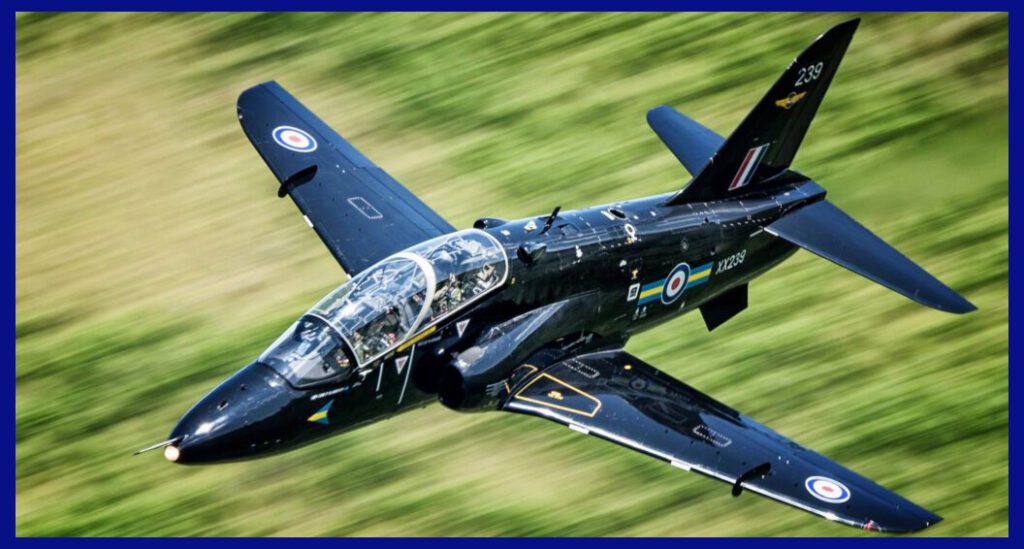
Hawk Mk 132 Technical Specifications
- Crew: 2 ( student and instructor )
- Dimensions: Length:_ 40 ft 9 in (12.43 m) Wingspan:_ 32 ft 7 in (9.94 m) Height:_ 13 ft 1 in (3.98 m) Wing area:_ 179.64 ft2 ( 16.7 m2)
- Powerplant: 1 x 29kN ( 6,500 lb st ) Rolls-Royce / Turbomeca Adour 871-07 twin-spool turbofan engine with Full Authority Digital Engine Control ( FADEC )
- Weights: Empty 4,480 kg ( 9,880 lb ) Maximum Load:_ 3,000 kg ( 6,600 lb )
- Max take-off weight: 9,100 kg (20,000 lb)
- Performance: High subsonic Mach 0.85 ( 1,028 km/h, 639 mph ) at an altitude of 30,000 ft.
- Max service ceiling: 44,400 ft (13,533 m) from this altitude, in diving, it can achieve a Max speed of Mach 1.2
- Ferry range: 2,520 km ( 1,360 nmi ) with drop-tanks
- Combat radius of action: with max payload_ 267 km (144 nmi) lo-lo-lo and 754 km (407 nmi) hi-hi-hi
- Rate of climb: 47 m/s (9,300 ft/min)
- Armaments: 1 x 30 mm ADEN Cannon in centreline pod.
- Hardpoints: The aircraft has a total capacity of up to 6,800 lb (3,085 kg) of weapons distributed on five hardpoints—two on each side of the wing and one on the centre pylon, with provisions for carrying various combinations of air-to-air and air-to-surface weapons, as well as drop tanks. This includes the capability to mount 4 ASRAAM or guided/unguided bombs on wing pylons.

In conclusion, the Hawk Mk 132 aircraft and the Surya Kiran aerobatic team represent the pinnacle of aviation excellence and the spirit of human innovation and determination. With its impressive capabilities and advanced technology, this trainer aircraft has proven itself to be a reliable workhorse that can perform a wide range of tasks with precision and efficiency.
When paired with the skill and expertise of the Surya Kiran team, it becomes a true force to be reckoned with, capable of performing breathtaking aerial displays that leave spectators in awe. So let us celebrate the Hawk Mk 132 and the Surya Kiran team as symbols of human ingenuity and a testament to the bravery, skill, and professionalism of the pilots who fly them.

Important Announcement for Our Valued Readers!
After an article is published, it is possible that updates or changes may have occurred beyond the time of publication. Therefore, it is important to be aware that certain information in the article might be outdated. To ensure the most accurate analysis, it is highly recommended to verify the content with the latest sources available.
However, we are dedicated to delivering outstanding articles on military products and global updates. Maintaining quality and smooth operation requires resources. Your support sustains our efforts in providing insightful content. By purchasing high-quality products through our affiliated links, you help us keep our platform alive and acquire top-notch items. Your unwavering support is invaluable and inspires us to strive further.
We welcome your suggestions and requests for more information, as we value feedback from our readers. If there’s specific defence material or equipment not covered on our site, please share your request in the comments. We’ll strive to research and provide the required information. We sincerely thank you for your unwavering interest in our website, and we eagerly anticipate hearing from you! Enjoy your reading experience!
